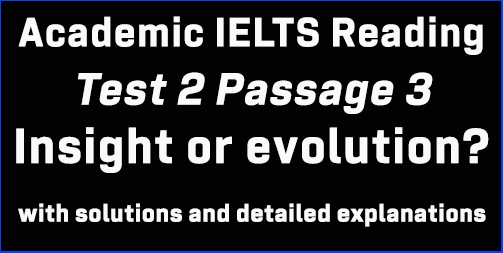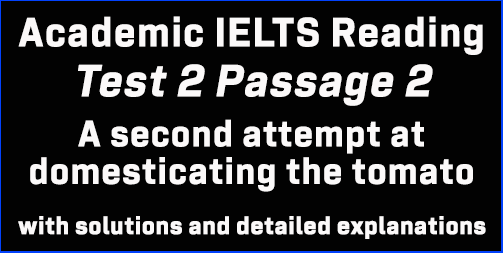IELTS Academic Reading: Cambridge 15 Test 3 Reading passage 1; Henry Moore (1898-1986); with best solutions and best explanations
This Academic IELTS Reading post focuses on solutions to IELTS Cambridge 15 Reading Test 3 Reading Passage 1 which is titled ‘Henry Moore (1898-1986)’. This is a targeted post for IELTS candidates who have big problems finding out and understanding Reading Answers in the AC module. This post can guide you the best to understand every Reading answer without much trouble. Finding out IELTS Reading answers is a steady process, and this post will assist you in this respect.
IELTS Cambridge 15 Test 3: AC Reading Module
Reading Passage 1: Questions 1-13
The headline of the passage: Henry Moore (1898-1986)
Questions 1-7: TRUE, FALSE, NOT GIVEN
[In this type of question, candidates are asked to find out whether:
The statement in the question agrees with the information in the passage – TRUE
The statement in the question contradicts with the information in the passage – FALSE
If there is no information on this – NOT GIVEN
For this type of question, you can divide each statement into three independent pieces and make your way through with the answer.]
Question no. 1: On leaving school, Moore did what his father wanted him to do.
Keywords for the question: leaving school, Moore did, his father wanted,
In paragraph no. 1, take a look at lines 4-5, “ .. . . After leaving school, Moore hoped to become a sculptor, but instead, he complied with his father’s wish that he train as a schoolteacher. . . .”
Here, After leaving school = On leaving school, he complied with his father’s wish = Moore did what his father wanted him to do,
So, the answer is: TRUE
Question no. 2: Moore began studying sculpture in his first term at the Leeds School of Art.
Keywords for the question: began studying sculpture, first term, the Leeds School of Art,
The answer is found in the first two lines of paragraph no. 2. The author says here, “After the war, Moore enrolled at the Leeds School of Art, where he studied for two years. In his first year, he spent most of his time drawing. . .”
This means Moore didn’t study sculpture in his first year at the Leeds School of Art; he studied drawing.
So, the answer is: FALSE
Question no. 3: When Moore started at the Royal College of Art, its reputation for teaching sculpture was excellent.
Keywords for the question: Royal College of Art, its reputation, teaching sculpture, excellent,
Paragraph no. 2 and 3 talk about the time Moore studied at the Royal College of Art. However, there is no mention of the College’s reputation for teaching sculpture.
So, the answer is: NOT GIVEN
Question no. 4: Moore became aware of ancient sculpture as a result of visiting London museums.
Keywords for the question: became aware, ancient sculpture, visiting London museums,
The answer is found in paragraph no. 3. The writer says in lines 1-3, “Alongside the instruction he received at the Royal College, Moore visited many of London museums, particularly the British Museum, which had a wide-ranging collection of ancient sculpture. During these visits, he discovered the power and beauty of ancient Egyptian and African sculpture. . . .”
Here, he discovered the power and beauty of ancient Egyptian and African sculpture = Moore became aware of ancient sculpture,
So, the answer is: TRUE
Question no. 5: The Trocadero Museum’s Mayan sculpture attracted a lot of public interest.
Keywords for the question: Trocadero Museum’s, Mayan sculpture, attracted, a lot of, public interest,
Again, paragraph no. 4 talks about the Trocadero Museum’s Mayan sculpture, but it doesn’t mention anything about public interest.
So, the answer is: NOT GIVEN
Question no. 6: Moore thought the Mayan sculpture was similar in certain respects to other stone sculpture.
Keywords for the question: Moore thought, Mayan sculpture, similar, certain respects, other stone sculpture,
In paragraph no. 4, lines 4-5 say, “ .. . . Moore became fascinated with this stone sculpture, which he thought had a power and originality that no other stone sculpture possessed. . .. .”
Here, no other stone sculpture possessed = the Mayan sculpture was NOT similar in certain respects to other stone sculpture,
So, the answer is: FALSE
Question no. 7: The artists who belonged to Unit One wanted to make modern art and architecture more popular.
Keywords for the question: the artists, belonged to Unit One, wanted, make modern art, architecture, more popular,
The answer to this question can be found in paragraph no. 5. Here, the writer says in lines 2-4, “ . .. he became a member of a group of young artists called Unit One. The aim of the group was to convince the English public of the merits of the emerging international movement in modern art and architecture.”
The lines suggest the aim of Unit One was to make modern art and architecture more popular.
So, the answer is: TRUE
Questions 8-13: Completing notes
[In this type of question, candidates are asked to complete different notes with NO MORE THAN TWO WORDS from the passage. Keywords are important to find answers correctly. Generally, this type of question maintains a sequence. However, we should not be surprised if the sequence is not maintained. Find the keywords in the passage and you are most likely to find the answers.]
Title of the notes: Moore’s career as an artist
Question no. 8: Moore is urged to offer his _________ and leave the Royal College
Keywords for the question: 1930s, Moore, urged to offer, leave, the Royal College,
In paragraph no. 6, the author of the text says in lines 2-6, “.. .. . In 1931, he held an exhibition at the Leicester Galleries in London. His work was enthusiastically welcomed by fellow sculptors, but the reviews in the press were extremely negative and turned Moore into a notorious figure. There were calls for his resignation from the Royal College, and the following year, when his contract expired, he left to start a sculpture department at the Chelsea School of Art in London.”
Here, 1931 & the following year = 1930s, There were calls for = Moore is urged to offer, he left = leave the Royal College,
So, the answer is: resignation
Question no. 9: Moore turns to drawing because _________ for sculpting are not readily available
Keywords for the question: 1940s, Moore, turn to drawing, because, sculpting, not readily available,
The answer can be found in paragraph no. 8, in lines 1-3. The writer says here, “In 1940, during the Second World War, Moore stopped teaching at the Chelsea School and moved to a farmhouse about 20 miles north of London. A shortage of materials forced him to focus on drawing. . . . .”
Here, 1940 = 1940s, shortage = not readily available, focus on drawing = turns to drawing,
So, the answer is: materials
Question no. 10: While visiting his hometown, Moore does some drawings of _________
Keywords for the question: 1940s, while visiting, hometown, Moore does, some drawings,
The last lines of paragraph no. 8 say, “. . . . In 1942, he returned to Castleford to make a series of sketches of the miners who worked there.”
Here, 1942 = 1940s, returned to Castleford = visiting his hometown, a series of sketches = some drawings,
So, the answer is: miners
Question no. 11: Moore is employed to produce a sculpture of a _________
Keywords for the question: 1940s, employed, to produce, sculpture of,
In the first lines of paragraph no. 9 the writer states, “In 1944, Harlow, a town near London, offered Moore a commission for a sculpture depicting a family. . .. .”
Here, 1944 = 1940s, offered Moore a commission = Moore is employed, for a sculpture depicting = to produce a sculpture of,
So, the answer is: family
Question no. 12: _______ start to buy Moore’s work
Keywords for the question: 1940s, start to buy, Moor’s work,
In line no. 5 of paragraph no. 9, the author of the text writes, “ . .. In this way, Moore’s work became available to collectors all over the world. .. .”
Here, became available to collectors = collectors start to buy,
So, the answer is: collectors
Question no. 13: Moore’s increased ________ makes it possible for him to do more ambitious sculptures
Keywords for the question: 1940s, Moore’s increased, make it possible for him, do more ambitious sculptures,
The last lines of paragraph no. 9 says, “ . . .. The boost to his income enabled him to take on ambitious projects and start working on the scale he felt his sculpture demanded.”
Here, boost = increased, enabled him = makes it possible for him, take on ambitious projects = do more ambitious sculptures,
So, the answer is: income
Click here for solutions to Cambridge 15 Academic Test 3 Reading Passage 2
Click here for solutions to Cambridge 15 Academic Test 3 Reading Passage 3




2 thoughts on “IELTS Academic Reading: Cambridge 15 Test 3 Reading passage 1; Henry Moore (1898-1986); with best solutions and best explanations”